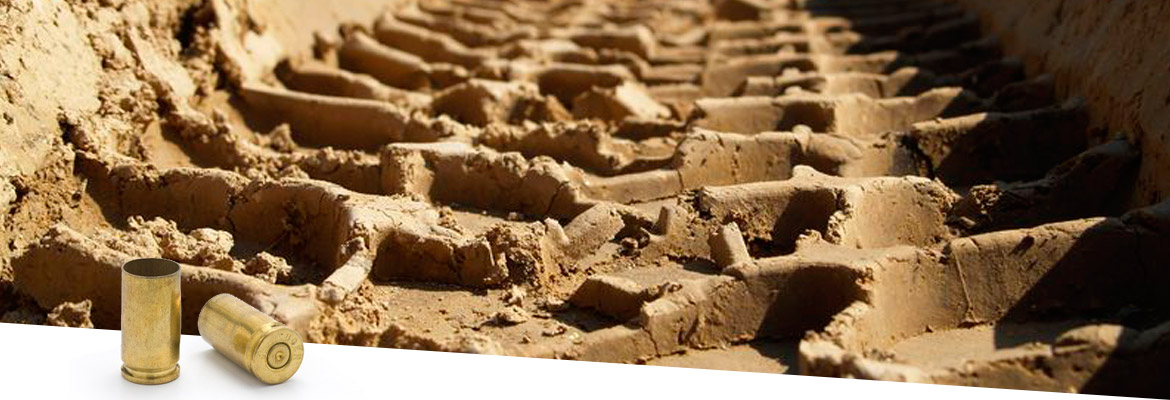

Impression Evidence
One of the most common forms of evidence encountered at a crime scene is impression evidence. This type of evidence occurs when an object(s) come into direct physical contact with a suitable receiving surface. Enough pressure must be applied for the object to transfer markings that reflect its characteristics.
Common forms of impression evidence encountered at a crime scene include: footwear impressions, toolmarks, latent prints, and tire impressions. Less common forms of impressions may also be encountered from time to time such as fabric impressions (e.g. gloves or stocking feet). See the list below for more examples.
Impressions deposited at a crime scene can generally be divided into two categories. Two dimensional (2-D) impressions are usually discovered on hard/rigid surfaces like vinyl/ceramic flooring, counters, doors and tabletops, or movable objects like paper or cardboard which may be covering the hard surface. Three dimensional (3-D) impressions are usually discovered in soft/pliable surfaces like soil, mud, sand, or snow.
Documentation via photographic preservation are done for both 2-D and 3-D impressions. Collection of 2-D impressions is typically accomplished by various lifting techniques, while the collection of 3-D impressions is accomplished by various casting processes. Once back at the lab, the questioned impression (photographs/lifts/casts) would then compared either directly to known exemplars (e.g., inked fingerprint card) or to test impressions made with known exemplars (e.g., pair of boots or boltcutters).
- Palm Prints
- Simultaneous Impressions
- Bare Foot Prints
- Elbow Prints
- Ear Prints
- Wrist Prints
- Knuckle Prints
- Non-Friction Ridge Skin Prints
- Fabric Impressions
- Blood Impressions
- Patent Impressions
- Toe Impressions
- Heel Impressions
- Crease Impressions
- Wear Marks
- Gun Impressions and Marks
- Wipe Marks
- Questionable Impressions
- Animal Muzzle Prints

 Professional Services
Professional Services Training Division
Training Division About Us
About Us Contact
Contact